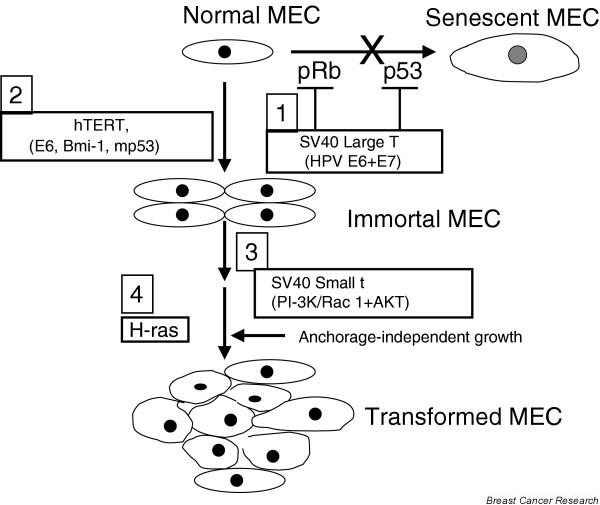Figure 4.

Current consensus: normal HMECs can be fully transformed in definable serial steps. The first step, bypass of senescence, is achieved by inactivation of p53 and pRb by SV40 large T, human papillomavirus (HPV) E6 and E7, or by inhibition of p53 and pRb expression by the RNAi approach (or expression of dominant-negative mutants in the case of p53). The second step, immortalization, is achieved through the expression of hTERT. Alternatively, expression of HPV E6 or overexpression of Bmi-1, mutant p53, or ZNF217 can be used to induce immortalization of HMECs. The third step, anchorage-independent growth, can be achieved by SV40 small t mediated modulation of PI3K and/or other signaling pathways or by overexpression of activated Rac1 and AKT. The fourth step, full transformation, requires the introduction of activated H-ras, which can be substituted by Raf and Ral-GEFs. Although the current model systems have utilized the serial schemes depicted, other combinations and/or schemes of oncogene introduction are likely also to be effective. Adapted from Elenbaas [9], Zhao [10], and Rangarajan [11] and coworkers. HMEC, human mammary epithelial cell; HPV, human papillomavirus; hTERT, catalytic subunit of human telomerase; PI3K, phosphatidylinositol 3-kinase; Ral-GEF, Ral guanine nucleotide exchange factor; RNAi, RNA interference.
